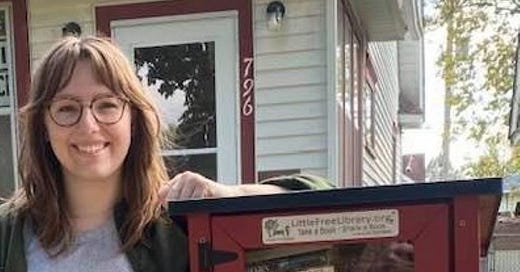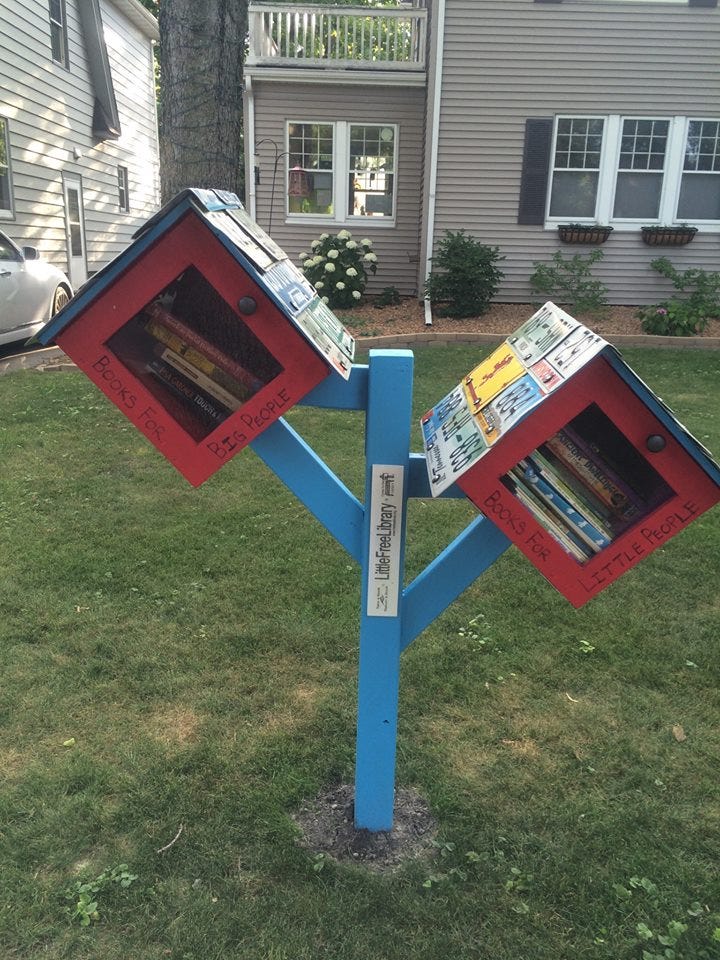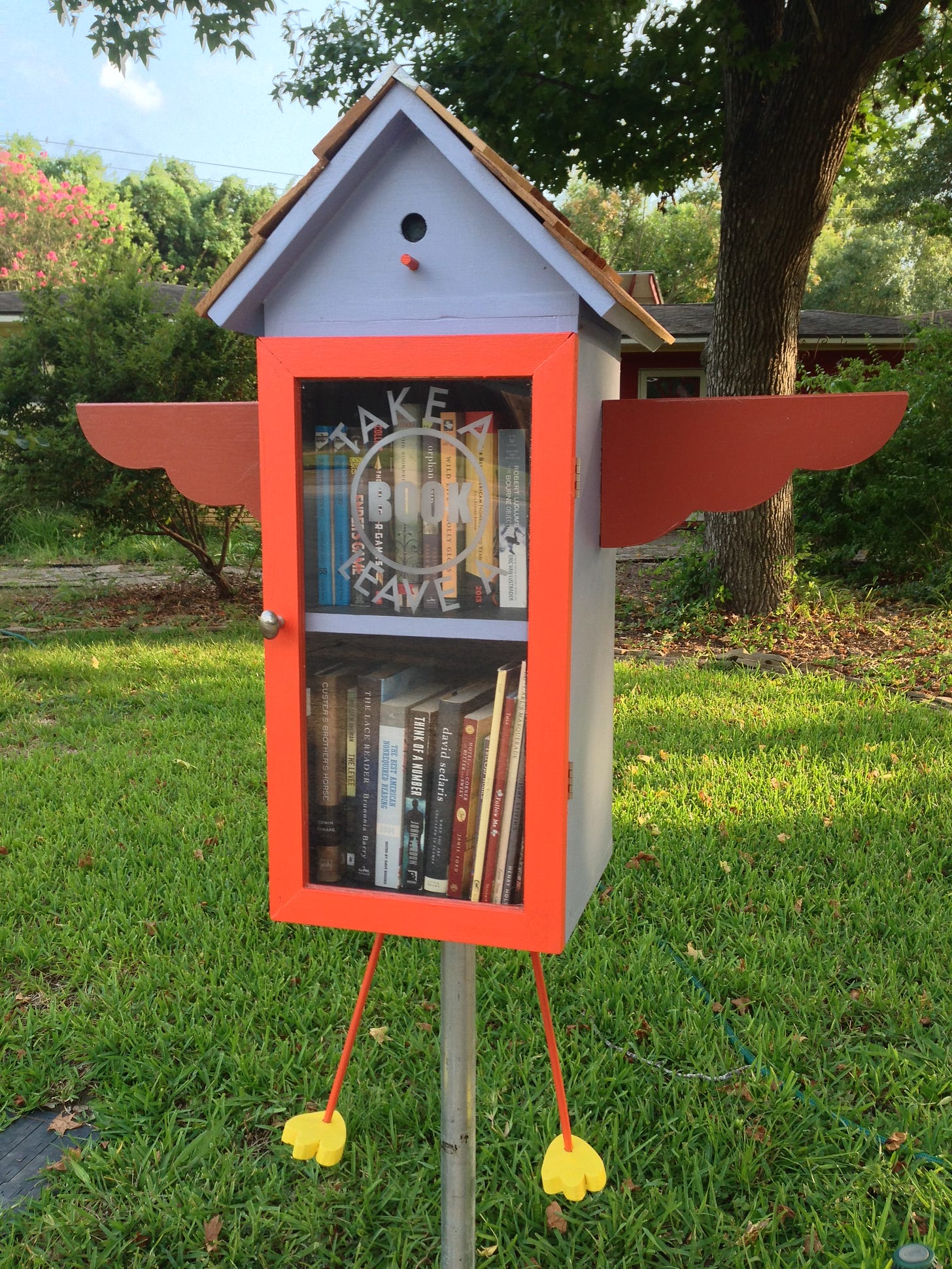Four Questions with Little Free Library’s Lexie Neeley
She explains how — and why — to start one.
I’m lucky that there are Little Free Libraries all throughout my neighborhood. Every few blocks, I stumble upon a cute little birdhouse-type structure, but instead of seeds, they’re filled with books. It’s magical.
The Little Free Library started in 2009 when Todd Bol put a model of a one-room schoolhouse filled with books in his front yard. Friends and neighbors loved the leave-a-book-take-a-book system and soon more libraries popped up around the community. Bol later teamed up with Rick Brooks, and together they launched the nonprofit that provides books and libraries to high-need areas and supports volunteer stewards who establish their own libraries. There are now more than 125,000 Little Free Libraries spread across more than 100 countries.
I chatted with Lexie Neeley, the organization’s programs coordinator, about getting books into communities and what it takes to start a Little Free Library. Our conversation has been edited and condensed for clarity.
What kind of role do Little Free Libraries play in neighborhoods and communities?
They are kind of a conversation starter. People start Little Free Libraries for a number of different reasons. We survey our stewards every year and ask, ‘Why did you start?’ People say ‘I love books and want to share’ or that they recognize issues in book access and want to help address those problems.
So, they add a Little Free Library to their neighborhood and then when people are walking by, it’s just an opportunity to chat. You can talk about books, a new thing in the library.
The beautiful thing about Little Free Libraries is that every single one is different. Even if there are ten in a neighborhood, every one will have something different to offer. That keeps it interesting and fresh.
You’re the programs director at Little Free Library. What kinds of programs do you oversee?
Our Impact Library Program is our grantmaking program. Every month, we award 15 to 20 applicants with a Free Little Library filled with books. These are primarily in areas where there is limited book access — the public library may be hard to reach, public transportation doesn’t go to where the library is. It may be a low-income community where most students at schools receive free or reduced cost lunch.
Another really exciting program is our Read in Color initiative, which is about bringing books uplifting, celebrating and representing diverse communities to marginalized communities. We partner with community organizations — we’re in Boston, D.C. and more — to identify areas with limited book access. Then we find stewards, sometimes it’s an organization, sometimes it’s an individual, and install a library filled with books that reflect the community. We take requests to get books that are special to the community or meet language needs.
We launched this program in 2020 and are excited to be coming up on our anniversary. The response has been overwhelmingly positive.
The communities that we've been working with are so, so excited to have books in their hands that look like them and their families, and to have books available for free throughout the neighborhood.
What would you say to someone on the fence about starting a Little Free Library?
I'm biased in saying this of course, but I think just try it. You can start small, if it feels like a big commitment or a big investment.
There are so many different ways to do it. It could be a bookshelf in your workplace. Or some people start with something like a Rubbermaid container that they set outside in the morning and bring back into their house at night. It really can be anything that you want it to be. I think that makes it super accessible for so many different people.
If you change your mind and decide you don't like it, you can hand it off to someone else who might be super excited about it.
If being a steward isn't for you, it’s easy enough to find a Little Free Library to fill and check out.
What’s next for Little Free Library?
We just relocated from Hudson, Wisconsin to St. Paul, Minnesota. We’re excited about getting connected with the Twin Cities community and expanding our outreach here.
More generally, we’re looking to scale things up. We want to place more libraries, share more books and help support the existing libraries so they can be even more successful. We want to give our stewards the tools they need to engage in a way that’s feasible and meaningful to them.
Thanks to Lexie for talking with me. You can learn more about how to start your own Little Free Library here.
What to Read If is a free weekly book recommendation newsletter. Need a rec? Want to gush about a book? Reply to this email, leave a comment or find me on Twitter @elizabethheld.
If you’re reading this on Substack or were forwarded this email, and you’d like to subscribe, click the button below.
Disclosure: I am an affiliate of Bookshop.org and I will earn a commission if you click through and make a purchase.







Love this, and love, love, love Little Free Libraries, of course! (Shoutout to my fellow Wisconsinite Lexie, too.) My mom's LFL is adorable -- she has added a birdbath, and a hook for dog leashes and a box of dog treats to the post underneath the books. She gets a lot of foot traffic and her inventory turns over daily.
I have wanted one for years -- of course I want one -- but my neighborhood, too, is saturated with them, and I live on a dead-on street without a sidewalk so while there *is* foot traffic, it's not as heavy as it is a block away where people are going places, and walking is safer. I think I could differentiate by offering only children's books -- there are a lot of kids in the 15 or so houses immediately surrounding me ranging from babies to teenagers, but I worry that I'd be heartbroken if we built one, filled it up, and then no one used it...
I have a bit of an LFL addiction. Cannot walk past one (and there are dozens in my Seattle neighborhood) without stopping. And I've donated hundreds over the years. It's a great thing.